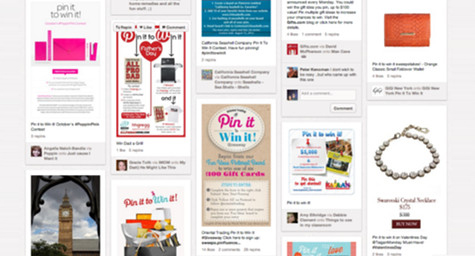Why Pinterest Makes Dollars and Sense for Retailers


Pinterest has become a social media phenomenon and now this photo-sharing website is giving a major boost to the retail industry. Pinterest has become popular with Internet users because it allows them to “pin” images that interest them onto online bulletin boards and to follow the bulletin boards of others. Pinterest has a predominately female following who often pin images related to fashion, beauty, home décor, food, and party planning. As a result of these retail-centric areas of interest, the retail industry is reaping the rewards of Pinterest and using the website as a way to promote their products, generate traffic, and increase sales. Reuters.com reported on how Pinterest is helping retailers reach online shoppers in social and strategic ways.
Pinterest is relatively new, but quickly became the fastest standalone website to hit 10 million unique monthly visitors and currently boasts 25 million members. Most of these members are female with high education levels and plenty of disposable income.
This makes the Pinterest audience extremely desirable to retailers, yet the ad-free nature of the website presented a problem as to how they could market their brands and products effectively to attract these female users. The natural answer was for retailers to start pinning images of their products and brand personalities. In addition to pinning, retailers are now placing Pinterest buttons on their websites, creating Pinterest pages of their own, and investing more money in marketing to Pinterest users.
After all, Pinterest generates more dollars per user than many other social media sites. While Facebook may be a leading driver of shopping by volume, the average Pinterest shopper spends almost $170 per session compared to the average Facebook shopper’s $95 per session, and the Twitter shopper’s $70 per session.
Generating higher sales totals per session is just one of the retail benefits of Pinterest. Another is that the cost of acquiring a Pinterest user is lower than on similar sites. In fact, the cost of acquiring a Pinterest user today is between one penny and 50 cents. Compare that to the cost of acquiring a Facebook user, which is between 50 cents and $2.50.
Once retailers grasp the basics of pinning, they find that the real secret to sales success on the site is actually not to sell. Most retailers do not offer discounts or specials on Pinterest in favor of using the site to simply showcase their style or seasonal images. Some retailers actually generate more traffic from their “pinboards” of lifestyle pictures than from their product boards. Other retailers gain attention by hosting Pinterest sweepstakes and encouraging people to post their own photos for a prize.
While it may seem odd that retailers are attracting traffic by promoting things other than their products, the logic lies in that Pinterest users often spend more time clicking on aspirational images that capture their interest. These clicks still lead to the retailer’s website, but it’s a much softer sales approach that seems to resonate well with these Pinterest shoppers.
Yet no matter how retailers position themselves on Pinterest, the most important thing is that they’re developing a presence, since most of their competitors are likely to be doing the same and vying for a piece of the Pinterest pie.
To incorporate Pinterest into your retail marketing efforts, contact MDG.
MDG, a full-service advertising agency with offices in Boca Raton and New York, NY, is one of Florida’s top integrated marketing agencies. Our 360° approach uses just the right mix of traditional and digital marketing to reach your advertising goals. While some industries may fare better in print and others online, we strive to create a balanced approach where traditional, digital, and social media marketing efforts support each other and your message is tailored to the medium. To stay on top of the latest trends in retail marketing, contact MDG.
Read more at Reuters.
